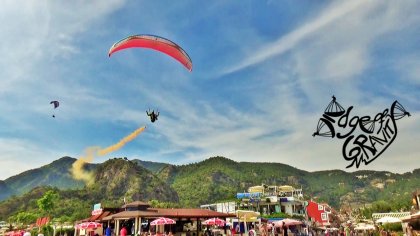19 years ago
Description:
During the manouvre the glider fly (or preferably „slide”) backwards while it’s mostly still inflated. The Tail Slide is the very narrow passage between the deep stall (parachutage) and the Full Stall. However, basically it’s a quite simple manouvre (it has almost the lowest coefficient on competitions), it needs a very precise control from the pilot to do it really nice. It’s probably the best manouvre to check an acro pilot’s ability, that’s why the judges always put it into the compulsory manouvre list for the qualification runs.
Preparation:
To prevent riser twisting, set your harness to sitting position, open the chest strap as much as possible and put your legs under the harness. Take one wrap if the brakelines are long.
Enter:
From trim speed, slow down the glider to minimum speed. When it stabilized over your head (doesn’t swinging anymore), put your feets under the harness and pull down the brakes just a little bit more. At this moment the brakes became lighter and the you enter a parachutage stall (deep stall). Release the brakes only few centimeters to stabilize the deep stall, than slowly brake just a little bit more until the glider starts to fly backward with slightly collapsed wingtips facing to the front.
Or
Enter a Stabilized Full Stall. When the descending is stable, without any turning and oscillating, slowly release the brakes even more until the glider almost totally reopens (keep the tips only a little bit collapsed).
Exit:
Release the brakes quickly and symmetrically, than brake the following surge (just as in a Full Stall exit).
Dangers!
If you pull too much brake (I mean few centimeters!), you can easily Full Stall the glider. Please read also the dangers of Spin and Full Stall, included riser twisting. Be very confident with Full Stalls before you try this trick.
Don’t do this manouvre if your glider’s porosity is bad, because you can easily end up in a deep stall.
Video:
There is no video clip about this trick yet.






